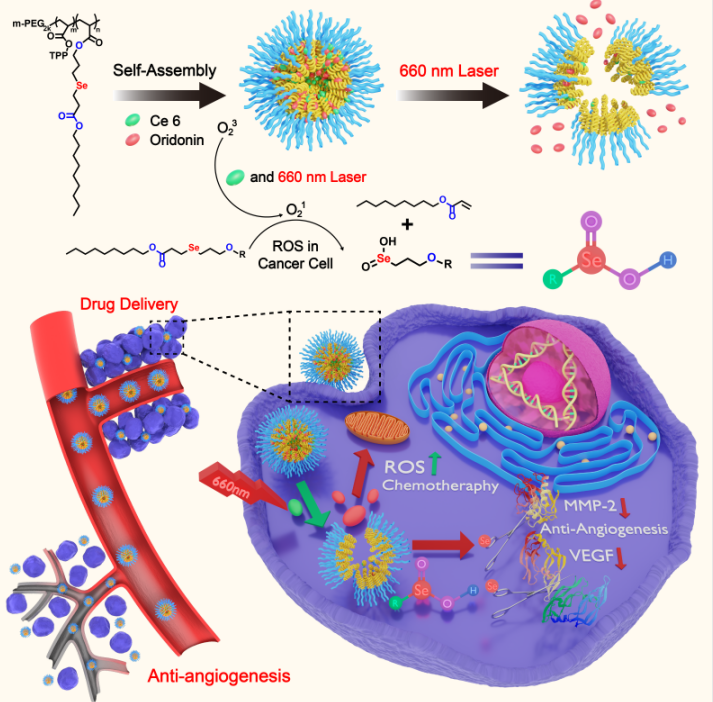Chenxing Sun, Shiqian Gao, Yizheng Tan, Zhiheng Zhang, and Huaping Xu
ACS Biomater. Sci. Eng., 2021, 7, 3201.
The abnormal tumor vasculature in solid tumors creates hypoxia and leads to compromising the delivery and anticancer efficiency of nanomedicine. Nanomaterials with intrinsic antiangiogenesis ability might normalize tumor vessels and improve the therapeutic effect of O2-related treatment like PDT. Herein, we designed and prepared ROS-responsive side-chain selenium-grafted polymers, which had potential antiangiogenic activity, as vehicles to load photodynamic therapeutic agent Ce6 and chemotherapeutic drug oridonin. Under NIR irradiation, the C−Se bonds on the side chain of polymers could be cleaved in the presence of 1O2 produced by Ce6 and further formed organic selenic acid through selenoxide elimination reaction. The generated seleninic acid could downregulate the expression of vascular endothelial growth factor (VEGF) and matrix metalloproteinase-2 (MMP-2) to inhibit angiogenesis and further relieve hypoxia. The released oridonin could significantly increase the intracellular ROS concentration. Both could modulate cancer cells’ microenvironment to reinforce PDT. Therefore, these nanomedicines could be a good candidate for synergistic treatments of antiangiogenesis treatment, PDT, and chemotherapy.

